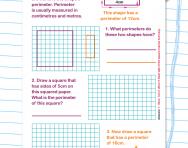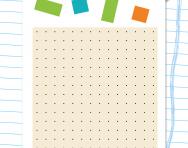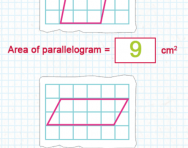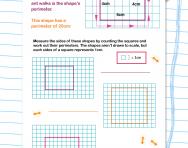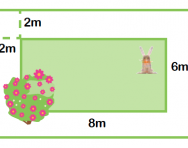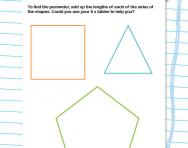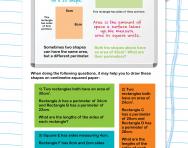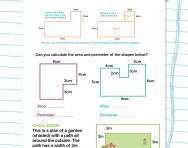What is the perimeter?
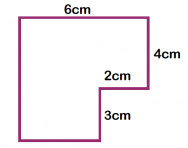
What is the perimeter?
Calculating the perimeter
Children start to learn about perimeter in Year 4. They may be asked to measure the length of each side of the shape and then add these measurements up to find the perimeter. Alternatively, they may be given a shape like the following, which is not drawn to scale, and asked to find the perimeter:
At this point, they would need to understand that a rectangle has two long sides that are exactly the same length and two short sides that are exactly the same length, which is why only two measurements are given above. They could then work out the perimeter in any of the following ways:
10 + 4 + 10 + 4 OR (10 x 2) + (4 x 2) OR (10 + 4) x 2
The perimeter of a shape is always calculated by adding up the length of each of the sides.
In Year 5 and 6, children might be given shapes like this one and asked to find their perimeter: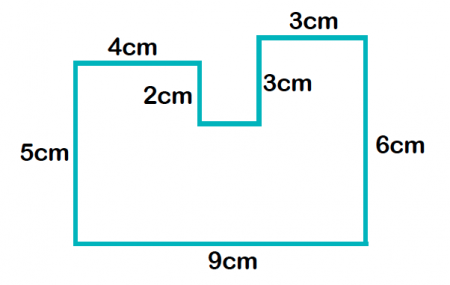
In this case, they need to work out the lengths of the edges that are unlabelled, by looking at the other labelled edges.
In this case, you can work out that the unlabelled small side on the shape is 2cm long, since it must be the length of the bottom edge (9cm) minus the two top edges (4cm and 3cm).
To find out the perimeter, you would then need to add up all the sides: 4 + 5 + 9 + 6 + 3 + 3 + 2 + 2 = 34cm.
Perimeter puzzles in KS2
Often, children will be given worded puzzles or investigations in which they will have to visualise a shape in order to find the answer, for example:
A rectangle has an area of 20cm². What could its perimeter be?
- In this case, the child would need to work out what length the sides could be in order to have an area of 20cm².
- They would need to remember that the formula for area is length x width, so they may come to the conclusion that the sides of the rectangle are 4cm and 5cm.
- They would then need to work out the perimeter (4 + 4 + 5 + 5 ) and would come to the answer 18cm.
It is essential that children become familiar with problems like this, where they are required to visualise shapes that have not been drawn. It can be helpful for children to draw rough, unmeasured shapes to help them solve these problems.
Perimeter FAQs
Q: What is perimeter, and why is it important for my child to learn about it?
- Perimeter refers to the total length of the boundary of a shape. It's crucial for real-world applications like measuring fencing for a garden, or calculating the amount of material needed for a picture frame. Teaching perimeter helps children understand spatial concepts and develop problem-solving skills.
Q: At what age should my child start learning about perimeter?
- Children typically start learning about perimeter in primary school, typically in Year 4. However, exposure to basic spatial concepts like length, width, and shapes begins much earlier. Parents can introduce informal discussions about perimeter during activities like measuring objects around the house.
Q: How can I help my child understand perimeter better?
- Encourage hands-on activities like measuring household items or drawing shapes on graph paper to calculate perimeter. Use everyday objects like books or furniture to illustrate concepts. Additionally, online resources, educational games, and worksheets can provide interactive learning opportunities.
Q: What are some common mistakes children make when learning about perimeter?
- One common mistake is forgetting to include all sides of a shape when calculating perimeter. Children may also confuse perimeter with area, so it's essential to emphasise the distinction between the two concepts. Another challenge is identifying irregular shapes and determining how to calculate their perimeters accurately.
Q: How can I make learning about perimeter fun for my child?
- Incorporate games and activities that involve measuring and calculating perimeter, such as creating a perimeter scavenger hunt around the house or drawing shapes with outdoor chalk and measuring their perimeters. You can also integrate perimeter into art projects or cooking activities by discussing the shapes and measurements involved.
Q: What real-life examples can I use to illustrate the relevance of perimeter to my child?
- Point out instances in daily life where understanding perimeter is useful, such as when planning a garden layout, wrapping gifts, or designing a room layout. Take advantage of opportunities during outings to discuss perimeter, like measuring the dimensions of a soccer field or calculating the distance around a play area.

Give your child a headstart
- FREE articles & expert information
- FREE resources & activities
- FREE homework help

